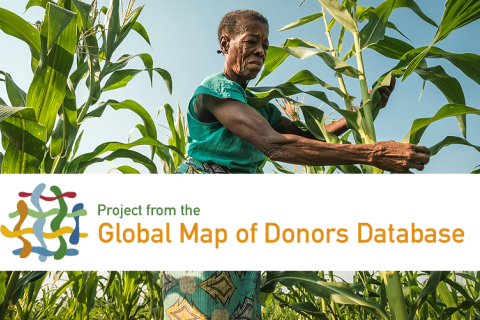General
This project aims at establishing a public service for precise use of GPS technology for surveying and mapping, and a digital base map for the whole territory of Ukraine including occupied areas, with a data content and accuracy equivalent to scale 1:50 000. This corresponds to what exists in most other European countries.
Challenges and justification for project
Ukraine has a territory of 603.000 km2, of which as much as 2/3 are arable land. Sustainable land management is crucial to economic development. Maps are indispensable for land- and territorial management as well as for many other purposes in public and private sectors. Up-to-date maps are available for 20 % only, and these maps are not integrated into a user oriented electronic service. For the remaining 80 % there are only old maps from the Soviet time.
Maps are not easily available to users in Ukraine. As in most other European countries, basic maps should be made available on the Internet and harmonized with other thematic data, according to the concept of National Spatial Data Infrastructure (NSDI). Despite that Ukraine is not an EU member, the Government wants to implement their NSDI in accordance with the EU Inspire directive.
Activities
1.Preparation of digital map for the whole territory of Ukraine and a solution for distribution of the maps for good governance, land use planning and sustainable land management, as well as for implementation and reporting on the Sustainable Development Goals.
2.Establishing a network of ground stations needed for a public service supporting precise use of GPS technology for boundary surveys, etc. building on the previous project.
Components
1.Produce new maps using satellite images to update existing old maps. This will include making a product specification to ensure that the data is structured for optimal use, and will include verification and upgrading of the data model for the database, which will hold the maps.
2.The second component of the project is to integrate the existing digital maps and the updated old maps into a single seamless database.
3.The third component is to establish a solution for efficient access to the maps and satellite images for all users in Ukraine. This should be done in accordance with the concept of a National Spatial Data Infrastructure, in line with European standards outlined in the EU INSPIRE directive and adjacent standards and guidelines. This will lead to a more transparent and efficient land administration in Ukraine.
4.The fourth component of the project is to establish a network of ground stations and a related public service (Ukrainian Positioning System = UAPOS), supporting precise use of GPS technology. It is proposed to start the establishment of UAPOS with 90 reference stations, prioritizing areas with the most intensive development and active land market, and with a central control facility at the SALR premises in Kiev. A business plan for the service will also be developed to ensure sustainability. The system will improve the surveying and mapping of parcel boundaries, thus improving public services to the emerging markets in land and reduce conflicts over ownership, which is a massive problem after restitution of private ownership to land. This corresponds to the situation in Norway and in many other European countries, where the State operates a high quality and strictly controlled service in addition to private positioning services.
5.The fifth component of the project is training, capacity building and awareness raising. The training focuses on improving the capacity of the StateGeoCadastre to efficiently implement all activities of the project. Awareness campaigns will focus on informing public institutions and other users about the availability of maps and related terms for use. Such maps are an indispensable information resource for good governance, and are urgently needed for many purposes in Ukraine; inter alia, for land management, environmental planning and reporting, for improvements to infrastructure, for water management, for adaptation and mitigation of effects of climate change, as well as for a wide range of other usage at all levels of public sector, and in private sector.

